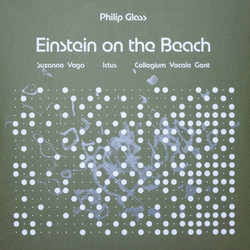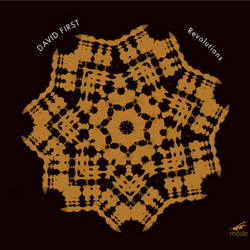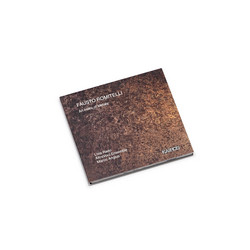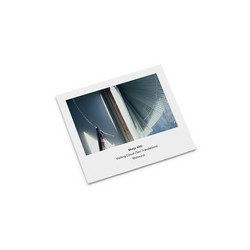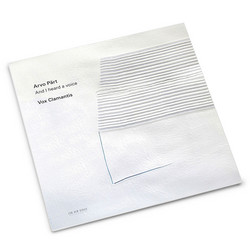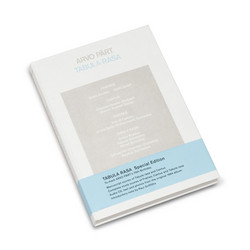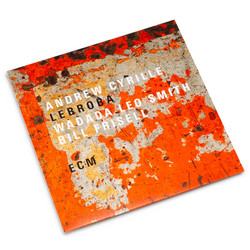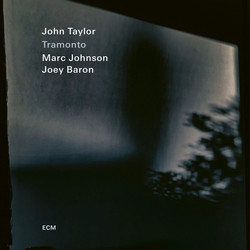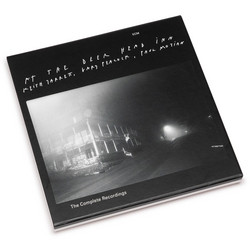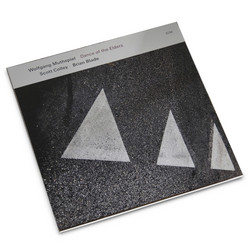We do require your explicit consent to save your cart and browsing history between visits. Read about cookies we use here.
A question that has always been asked, regardless of genre, is whether music can be conservative and revolutionary at the same time. Various composers have surfaced in recent times with brilliant compositions, but their work has not adhered to any of the schools of composition that make up the 20th century classical music. These composers have often drawn inspiration from musical principles and philosophies that are foreign to the classical heritage, and in general have been less concerned with academic approval and theoretical correctness than with communicating directly with the listeners.
One of those composers is Arvo Pärt, whose spiritually resonant music has evolved from a deep Christianity (as well as the music of Steve Reich, Satie, Lukas Ligeti, John Cage and Russian neo-classicism, among many), and whose work is one of the defining soundworlds of the last 30 years. Journalist Tom Casetta wrote that there are many paths to God and the music of Arvo Pärt is, without a doubt, one of them. His music demands an intuitive mode of perception which includes the experience of silence, something that is ever present in the tradition of the Orthodox Church.
Pärt first came to broad public attention in 1984, even though for years prior to that he was a prolific composer of film music in his native former Soviet Union. When in 1984 Manfred Eicher decided to start a new branch to his ECM label for composers (The New Series), it was a result of hearing the music of Pärt on the car radio during a late night drive. It struck him so powerfully that he had to stop the car to listen. "What moved me in his music," wrote Eicher, "was clarity—the direct path to ear and mind, a drama of quiet passion. The music was cathartic, a music of slowly beating wings. A drawing-inward of all feeling, as if the music were burying itself in a crypt of its own making: pitiless and solitary. A music of innermost calm demanding concentration from the musicians as well as from the listeners. These compositions didn't make the vulnerable soul turn inward; they created a dialectic of action and stillness."
There is plenty of music that is as profound as Tabula Rasa , but only rarely does it reach similar emotional heights. The work is partially a prayer and partially a meditation that burns with passion and suffering. Pärt's music can be described as "simple," in that it features very few instruments, which are sounded with maximum effect and timbre. Pärt has coined the word "tintinnabulation" (which takes its name from the Latin word for bells) to describe his style of work which dates from the early 1970s. This places unusual emphasis on individual notes and makes extensive use of silence. All of these compositions were performed by some of the most important names in the music world. The first variation of "Fratres" (Brothers) is performed by Gidon Kremer on violin and Keith Jarrett on piano, and they hit it off wonderfully here. Rarely has Jarrett played such spartan but effective music as he does here.
"The Cantus In Memory of Benjamin Britten" is based on a melody dating from the time of death of this English composer (in December 1976)."Cantus" is played by the Stuttgart Town Orchestra and features the "Adagio" from Mahler's Symphony No. 5, with slowly building strings and the toiling of a single bell. The second version of "Fratres" is performed by 12 cellists from the Berlin Philharmonic Orchestra. The title piece is played by the Lithuanian Chamber Orchestra with Gidon Kremer (for whom Pärt exquisitely wrote the composition), Tatjana Grindenko on violins and Alfred Schnittke on prepared piano. It is filled with silence and simple triads for the piano and the violins, and full of intrinsic emotional snapshots and several sections culminate in climactic buildups of volume and intensity. Here, shadow and light interact with intensity. As the title says, the end result has an anodyne effect, leaving the listener cleansed, healed and moved.
To honor the composer's 75th birthday, a deluxe edition of the album has been released, including a 200-page hardbound book with essays, photographs, study scores of all the works on the CD, and copies of the manuscripts of "Tabula Rasa" and "Cantus."
More than often modern music is thought that it has to sound like a toolbox descending a staircase. Pärt is the total opposite; his music burns with intense and quiet passion. It almost forces the listener into introspection and contemplation. This work is one of the marvels of the modern age and is still as captivating as when it was first released. Just like the works of the old masters that echo for centuries, this masterpiece by Arvo Pärt will echo and arouse the deepest of emotions eons after it was first released.
The 1984 ECM album Tabula Rasa was the vehicle that introduced the revolutionary music of Arvo Pärt to audiences outside Eastern Europe and initiated what was to become one of the most extraordinary musical careers of the late 20th century. Like many of the first generation American minimalists, he limited himself to diatonic harmonies and generated pieces by setting processes in motion, but the radical simplicity he achieved was the result of religious contemplation that was at least as, if not more, formative than his quest for a new musical aesthetic. The result was music suffused by an unhurried, luminous serenity, and while it was distinctly contemporary, it had an archaic quality that tied it to the music of the very distant past.
The three instrumental pieces recorded here (one of which appears in two versions) were among the first Pärt wrote in his newly developed style, which came to be known popularly as holy minimalism. (The composer prefers the term tintinnabulation, because in his words, "The three notes of the triad are like bells.") Fratres, originally for chamber orchestra, is undeniably Pärt's most popular work and exists in well over a dozen versions, two of which are included here. Gidon Kremer and Keith Jarrett bring great nuance and sensitivity to the version for violin and piano. They play somewhat loosely with details of the score, but they are entirely in sync with the spirit of the piece, and it's a gripping performance. The violin part is hugely virtuosic and Kremer is breathtaking, particularly in the crystalline purity of the outrageously high harmonics that end the piece. The arrangement of Fratres for 12 cellos is an altogether more lyrical and meditative version, and the cellists of the Berlin Philharmonic Orchestra play it with gorgeous tone and depth. Cantus in Memory of Benjamin Britten for string orchestra and bell is at once one of the composer's most brilliantly simple and profound pieces. The first violins repeat a mournful descending figure, and each of the other sections then doubles the length of the note values of the part above it so that the note that opens the piece is held two beats by the first violins, but it is sustained for 32 beats by the double basses. There's nothing mechanical sounding about the piece, though, and by its ending, it has created a mood of devastating loss and grief. The first movement of Tabula Rasa, for two violins, prepared piano, and chamber orchestra, is the most enigmatic selection, full of unexpected long silences and flurries of frenzied activity, while the lovely, meditative second movement is more characteristic of the composer.
Kremer is joined by violinist Tatjana Grindenko and composer/pianist Alfred Schnittke in a beautifully expressive performance, accompanied by Saulius Sondeckis leading the Lithuanian Chamber Orchestra. Produced by Manfred Eicher, the visionary who "discovered" Pärt and made it his mission to introduce him to Western audiences, the sound of the album is admirably clear and clean, except that there are some room noises in Tabula Rasa.
The iconic blue, grey and white CD cover has now become a book cover, which, given the original album’s significance, is hardly surprising. Back in 1984 Tabula rasa (blank slate) helped re-educate our ears and throw open the doors of our musical sensibilities to spatial domains that had otherwise been closed to us. Pärt’s near-minimalist “tintinnabulation” (a bell-like style based on a simple triad), his impeccable ear, sense of musical timing and deep spiritual engagement helped alter the way we listened in the late 20th century, cleansed us – or some of us – of the incessant need for musical “busyness”. Far from wearing off, the novelty of Pärt’s austerely meditative style has since become an essential component of our musical lives in the 21st century. If you’re a newcomer, then the weeping cadences of the Cantus in Memory of Benjamin Britten would be a good place to start, though the two very different versions of Fratres (brothers) will prove equally compelling, the violin option opening to fast, spidery arpeggios played solo by Gidon Kremer, before pianist Keith Jarrett calls a forceful halt and Kremer responds with tactile pizzicatos. The less openly demonstrative version for 12 cellos employs the same beautiful chords underpinned by a gentle, sporadic thudding.
And there’s Tabula rasa itself, scored for prepared piano, two solo violins, string quartet and double bass, the seemingly timeless second movement “Silentium” opening to an infinitely strange rising sequence on the piano that sets off a haunting bass drone. Nothing else in 20th-century music is quite like it and while various later recordings have done the piece proud, this finely tensed version by Kremer and Tatjana Grindenko with Alfred Schnittke at the piano and the Lithuanian Chamber Orchestra under Saulius Sondeckis is a very definite first choice. The book includes perceptively written contributions from Paul Griffiths and Wolfgang Sandner as well as a very instructive first-ever publication of facsimiles of the manuscripts for Tabula rasa and the Cantus, and beautifully printed study scores of all five works. Even if you think you can’t follow a score, do try, and not just once… start with Tabula rasa’s “Silentium”, where the piano’s very visible punctuation will keep you on course. This extremely handsome production is a worthy tribute to what is without any shadow of a doubt one of the great recordings of the last century.
Related products
More by Arvo Pärt
More from ECM Records
Become a member
Join us by becoming a Soundohm member. Members receive a 10% discount and Free Shipping Worldwide, periodic special promotions and free items.
Apply hereSoundohm is an international online mailorder that maintains a large inventory of several thousands of titles, specialized in Electronic/Avantgarde music and Sound Art. In our easy-to-navigate website it is possible to find the latest editions and the reissues, highly collectible original items, and in addition rare, out-of-print and sometime impossible-to-find artists’ records, multiples and limited gallery editions. The website is designed to offer cross references and additional information on each title, as well as sound clips to appreciate the music before buying it.
Soundohm is a trademark of Nube S.r.l.







